Fluid–Structure Interaction Analysis of a Wind Turbine Blade with Passive Control by Bend–Twist Coupling
Abstract
1. Introduction
- a.
- The validation of the numerical models and the respective solver configuration, considering the simulation of a composite beam with bend–twist coupling behavior, subject to bending loads and the FSI simulation of an industrial fan blade with harmonic excitation at the base;
- b.
- The simulation of different cases of interest begins with the definition of an equivalent blade structure with bend–twist coupling along with a suitable reference structure. Subsequently, the simulation phase considers the simulation of blade operation under steady wind velocities and the simulation in stand-still conditions under an extreme wind speed model.
2. Numerical Models
2.1. Finite-Volume Model Configuration for the Fluid Problem
2.2. Finite-Element Model Configuration for the Structural Problem
2.3. Fluid–Structure Interaction Framework
3. Simulation Campaigns
3.1. Validation Cases
3.1.1. D-Shaped Spar with Bend–Twist Coupling
3.1.2. Air Conditioning Cooler Fan Blade
3.2. Study Cases
3.2.1. Equivalent Blade Structure
3.2.2. Computation of Blade Loads
4. Results
4.1. Validation Cases
4.1.1. D-Shaped Spar with Bend–Twist Coupling
4.1.2. Air Conditioning Cooler Fan Blade
4.2. Study Cases
4.2.1. Equivalent Blade Structure
4.2.2. Assessment of Blade Loads in Normal Operating Conditions
4.2.3. Assessment of Blade Loads in Extreme Wind Conditions
5. Conclusions
Author Contributions
Funding
Data Availability Statement
Conflicts of Interest
References
- IRENA. Renewable Power Generation Costs in 2021; International Renewable Energy Agency: Abu Dhabi, United Arab Emirates, 2021. [Google Scholar]
- Stehly, T.; Duffy, P. 2021 Cost of Wind Energy Review; Technical report; National Renewable Energy Laboratory: Golden, CO, USA, 2022. [Google Scholar] [CrossRef]
- Shamsudin, M.; Rousseau, J.; Verchery, G.; York, C. Experimental validation of the mechanical coupling response for hygro-thermally curvature-stable laminated composite materials. In Proceedings of the 6th International Conference “Supply on the Wings” in Conjunction with AIRTEC 2011, Internaitonal Aeropace Supply Fair’, Frankfurt, Germany, 2–4 November 2011; University of Glasgow: Glasgow, UK, 2011. [Google Scholar]
- Lobitz, D.; Veers, P. Aeroelastic behavior of twist-coupled HAWT blades. In Proceedings of the 1998 ASME Wind Energy Symposium; American Institute of Aeronautics and Astronautics: Reston, VR, USA, 1998. [Google Scholar] [CrossRef][Green Version]
- Fedorov, V.; Berggreen, C. Bend-twist coupling potential of wind turbine blades. J. Phys. Conf. Ser. 2014, 524, 012035. [Google Scholar] [CrossRef]
- Ong, C.H.; Wang, J.; Tsai, S.W. Design, manufacture and testing of a bend-twist d-spar. In Proceedings of the 37th Aerospace Sciences Meeting and Exhibit, Reno, NV, USA, 11–14 January 1999; pp. 43–52. [Google Scholar]
- Capuzzi, M.; Pirrera, A.; Weaver, P.M. Structural design of a novel aeroelastically tailored wind turbine blade. Thin-Walled Struct. 2015, 95, 7–15. [Google Scholar] [CrossRef]
- Scott, S.; Capuzzi, M.; Langston, D.; Bossanyi, E.; McCann, G.; Weaver, P.M.; Pirrera, A. Effects of aeroelastic tailoring on performance characteristics of wind turbine systems. Renew. Energy 2017, 114, 887–903. [Google Scholar] [CrossRef]
- Miao, W.; Li, C.; Wang, Y.; Xiang, B.; Liu, Q.; Deng, Y. Study of adaptive blades in extreme environment using fluid-structure interaction method. J. Fluids Struct. 2019, 91, 102734. [Google Scholar] [CrossRef]
- Herath, M.T.; Lee, A.K.L.; Prusty, B.G. Design of shape-adaptive wind turbine blades using Differential Stiffness Bend-Twist coupling. Ocean Eng. 2015, 95, 157–165. [Google Scholar] [CrossRef]
- York, C.B.; de Almeida, S.F.M. Effect of bending-twisting coupling on the compression and shear buckling strength of infinitely long plates. Compos. Struct. 2018, 184, 18–29. [Google Scholar] [CrossRef]
- Falkowicz, K.; Samborski, S.; Valvo, P.S. Effects of Elastic Couplings in a Compressed Plate Element with Cut-Out. Materials 2022, 15, 7752. [Google Scholar] [CrossRef]
- Falkowicz, K. Validation of Extension-Bending and Extension-Twisting Coupled Laminates in Elastic Element. Adv. Sci. Technol. Res. J. 2023, 17, 309–319. [Google Scholar] [CrossRef]
- Falkowicz, K. Experimental and numerical failure analysis of thin-walled composite plates using progressive failure analysis. Compos. Struct. 2023, 305, 116474. [Google Scholar] [CrossRef]
- Maheri, A.; Noroozi, S.; Toomer, C.; Vinney, J. A simple algorithm to modify an ordinary wind turbine blade to an adaptive one. In Proceedings of the European Wind Energy Conference, Athens, Greece, 27 February–2 March 2006; Volume 2, pp. 1195–1202. [Google Scholar]
- Nicholls-Lee, R.F.; Turnock, S.R. Enhancing performance of a horizontal axis tidal turbine using adaptive blades. In Proceedings of the OCEANS 2007-Europe, Aberdeen, Scotland, 18–21 June 2007. [Google Scholar] [CrossRef]
- Hayat, K.; Ha, S.K. Load mitigation of wind turbine blade by aeroelastic tailoring via unbalanced laminates composites. Compos. Struct. 2015, 128, 122–133. [Google Scholar] [CrossRef]
- Zahle, F.; Tibaldi, C.; Pavese, C.; McWilliam, M.K.; Blasques, J.; Hansen, M.H. Design of an Aeroelastically Tailored 10 MW Wind Turbine Rotor. J. Phys. Conf. Ser. 2016, 753, 062008. [Google Scholar] [CrossRef]
- Stäblein, A.R.; Tibaldi, C.; Hansen, M.H. Using pretwist to reduce power loss of bend-twist coupled blades. In Proceedings of the 34th Wind Energy Symposium, San Diego, CA, USA, 4–8 January 2016. [Google Scholar]
- Saverin, J.; Peukert, J.; Marten, D.; Pechlivanoglou, G.; Paschereit, C.O.; Greenblatt, D. Aeroelastic simulation of multi-MW wind turbines using a free vortex model coupled to a geometrically exact beam model. J. Phys. Conf. Ser. 2016, 753, 082015. [Google Scholar] [CrossRef]
- Atalay, O.; Kayran, A. Load Reduction in Wind Turbines with Bend-Twist Coupled Blades without Power Loss at Underrated Wind Speeds. J. Phys. Conf. Ser. 2018, 1037, 042015. [Google Scholar] [CrossRef]
- Barr, S.M.; Jaworski, J.W. Optimization of tow-steered composite wind turbine blades for static aeroelastic performance. Renew. Energy 2019, 139, 859–872. [Google Scholar] [CrossRef]
- Hand, M.; Simms, D.; Fingersh, L.; Jager, D.; Cotrell, J.; Schreck, S.; Larwood, S. Unsteady Aerodynamics Experiment Phase VI: Wind Tunnel Test Configurations and Available Data Campaigns; Technical report; National Renewable Energy Lab.: Golden, CO, USA, 2001. [Google Scholar]
- Sørensen, N.N.; Michelsen, J.; Schreck, S. Navier–Stokes predictions of the NREL Phase VI rotor in the NASA Ames 80 ft× 120 ft wind tunnel. Wind. Energy Int. J. Prog. Appl. Wind. Power Convers. Technol. 2002, 5, 151–169. [Google Scholar] [CrossRef]
- Hilber, H.M.; Hughes, T.J.R.; Taylor, R.L. Improved numerical dissipation for time integration algorithms in structural dynamics. Earthq. Eng. Struct. Dyn. 1977, 5, 283–292. [Google Scholar] [CrossRef]
- Mindlin, R. Influence of rotatory inertia and shear on flexural motions of isotropic elastic plates. Appl. Mech. 1951, 18, 31–38. [Google Scholar] [CrossRef]
- Reissner, E. The effect of transverse shear deformation on the bending of elastic plates. Am. Soc. Mech. Eng. 1945, 12, A68–A77. [Google Scholar] [CrossRef]
- Chimakurthi, S.K.; Reuss, S.; Tooley, M.; Scampoli, S. ANSYS Workbench System Coupling: A state-of-the-art computational framework for analyzing multiphysics problems. Eng. Comput. 2018, 34, 385–411. [Google Scholar] [CrossRef]
- Ong, C.H.; Tsai, S.W. Design, Manufacture and Testing of a Bend-Twist D-Spar; Technical report; Sandia National Laboratories: Albuquerque, NM, USA, 1999. [Google Scholar]
- Peters, C.D. Aerodynamic Damping of an Oscillating Fan Blade: Numerical Fluid Structure Interaction Analysis. Ph.D. Thesis, Stellenbosch University, Stellenbosch, South Africa, 2017. [Google Scholar]
- Peters, C.D.; van der Spuy, S.J.; Els, D.N.; Kuhnert, J. Aerodynamic damping of an oscillating fan blade: Mesh-based and meshless fluid structure interaction analysis. J. Fluids Struct. 2018, 82, 173–197. [Google Scholar] [CrossRef]
- Riegels, F.W. Aerodynamische Profile. Aerofoil Sections. Results from Wind-tunnel Investigations. Theoretical Foundations… Translated… by DG Randall; Translation by D.G. Randall.; Butterworths: Oxford, UK, 1961. [Google Scholar]
- Basson, N.R. Investigating the effect of aerodynamic damping on an axial flow fan blade. Ph.D. Thesis, Stellenbosch University, Stellenbosch, South Africa, 2015. [Google Scholar]
- Chujutalli, J.H.; da Silva, G.P.; Estefen, S.F. Determination of the geometric and material properties of the NREL Phase VI wind turbine blade. Mar. Syst. Ocean. Technol. 2021, 16, 69–83. [Google Scholar] [CrossRef]
- Lee, K.; Huque, Z.; Kommalapati, R.; Han, S.E. Evaluation of equivalent structural properties of NREL phase VI wind turbine blade. Renew. Energy 2016, 86, 796–818. [Google Scholar] [CrossRef]
- Laird, D.; Ashwill, T. Introduction to NuMAD-A numerical manufacturing and design tool. In Proceedings of the 1998 ASME Wind Energy Symposium, New Orleans, LA, USA, 10–13 January 1998; p. 60. [Google Scholar]
- Berg, J.C.; Resor, B.R. Numerical Manifacturing and Design Tool (NuMAD v2.0) for Wind Turbine Blades: User’s Guide. 2012. Available online: https://www.osti.gov/biblio/1051715-numerical-manufacturing-design-tool-numad-v2-wind-turbine-blades-user-guide (accessed on 13 July 2022).
- Lee, K.; Huque, Z.; Kommalapati, R.; Han, S.E. Fluid-structure interaction analysis of NREL phase VI wind turbine: Aerodynamic force evaluation and structural analysis using FSI analysis. Renew. Energy 2017, 113, 512–531. [Google Scholar] [CrossRef]
- Atmosphere to Electrons (A2e). uae6/uae6.z16.00. Maintained by A2e Data Archive and Portal for U.S. Department of Energy, Office of Energy Efficiency and Renewable Energy. Available online: https://a2e.energy.gov/ds/uae6/uae6.z16.00 (accessed on 30 January 2023). [CrossRef]
- Atmosphere to Electrons (A2e). uae6/uae6.z07.00. Maintained by A2e Data Archive and Portal for U.S. Department of Energy, Office of Energy Efficiency and Renewable Energy. Available online: https://a2e.energy.gov/ds/uae6/uae6.z07.00 (accessed on 30 January 2023). [CrossRef]
- Atmosphere to Electrons (A2e). uae6/uae6.z08.00. Maintained by A2e Data Archive and Portal for U.S. Department of Energy, Office of Energy Efficiency and Renewable Energy. Available online: https://a2e.energy.gov/ds/uae6/uae6.z08.00 (accessed on 30 January 2023). [CrossRef]
- Atmosphere to Electrons (A2e). uae6/uae6.z09.00. Maintained by A2e Data Archive and Portal for U.S. Department of Energy, Office of Energy Efficiency and Renewable Energy. Available online: https://a2e.energy.gov/ds/uae6/uae6.z09.00 (accessed on 30 January 2023). [CrossRef]
- Instituto de Hidrología, Meteorología y Estudios Ambientales—IDEAM. Atlas de Viento de Colombia. Available online: http://atlas.ideam.gov.co/visorAtlasVientos.html (accessed on 8 August 2023).
- IEC 61400-2:2013; Wind Turbines—Part 2: Small Wind Turbines. International Electrotechnical Comission: Geneva, Switzerland, 2013.
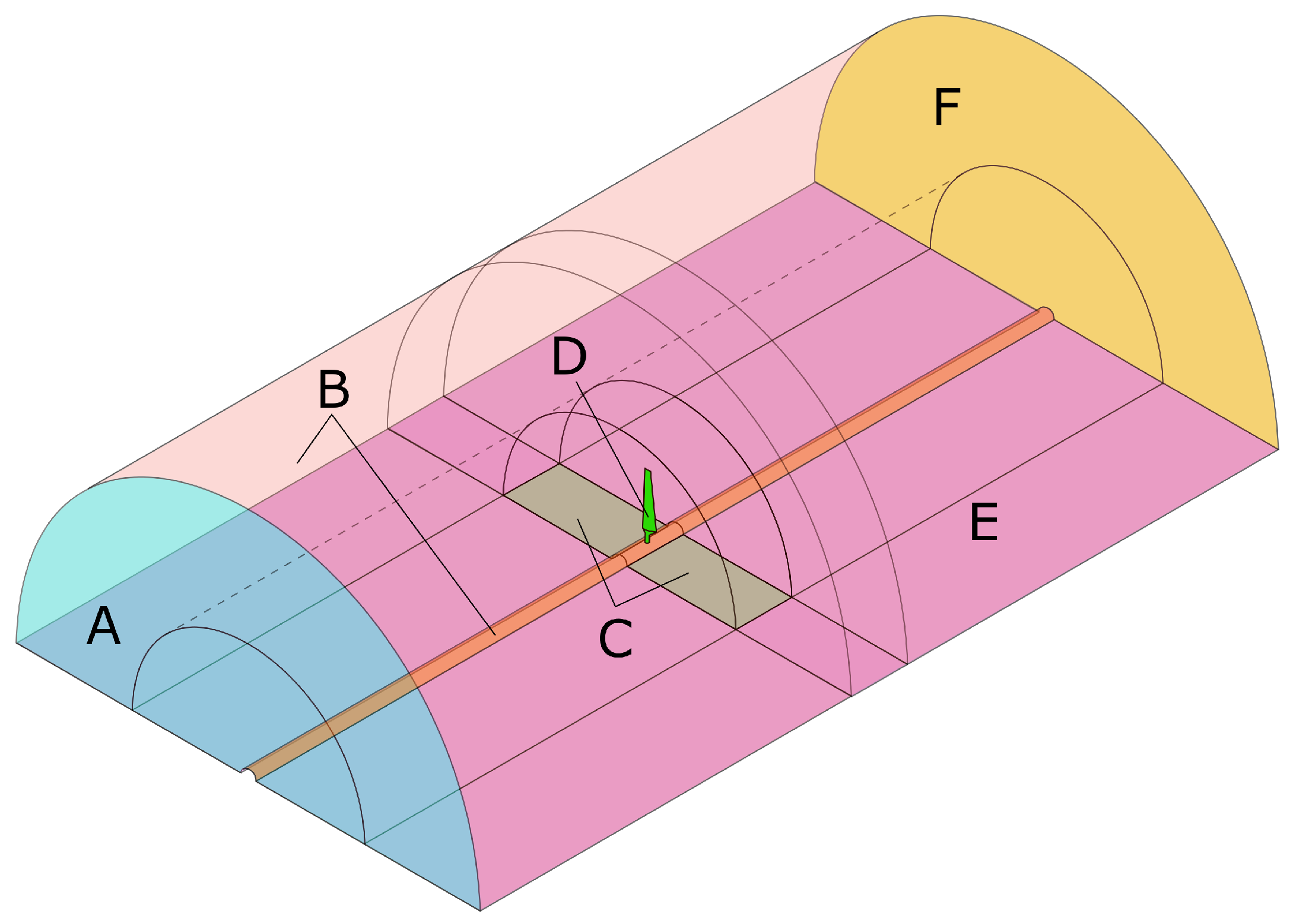

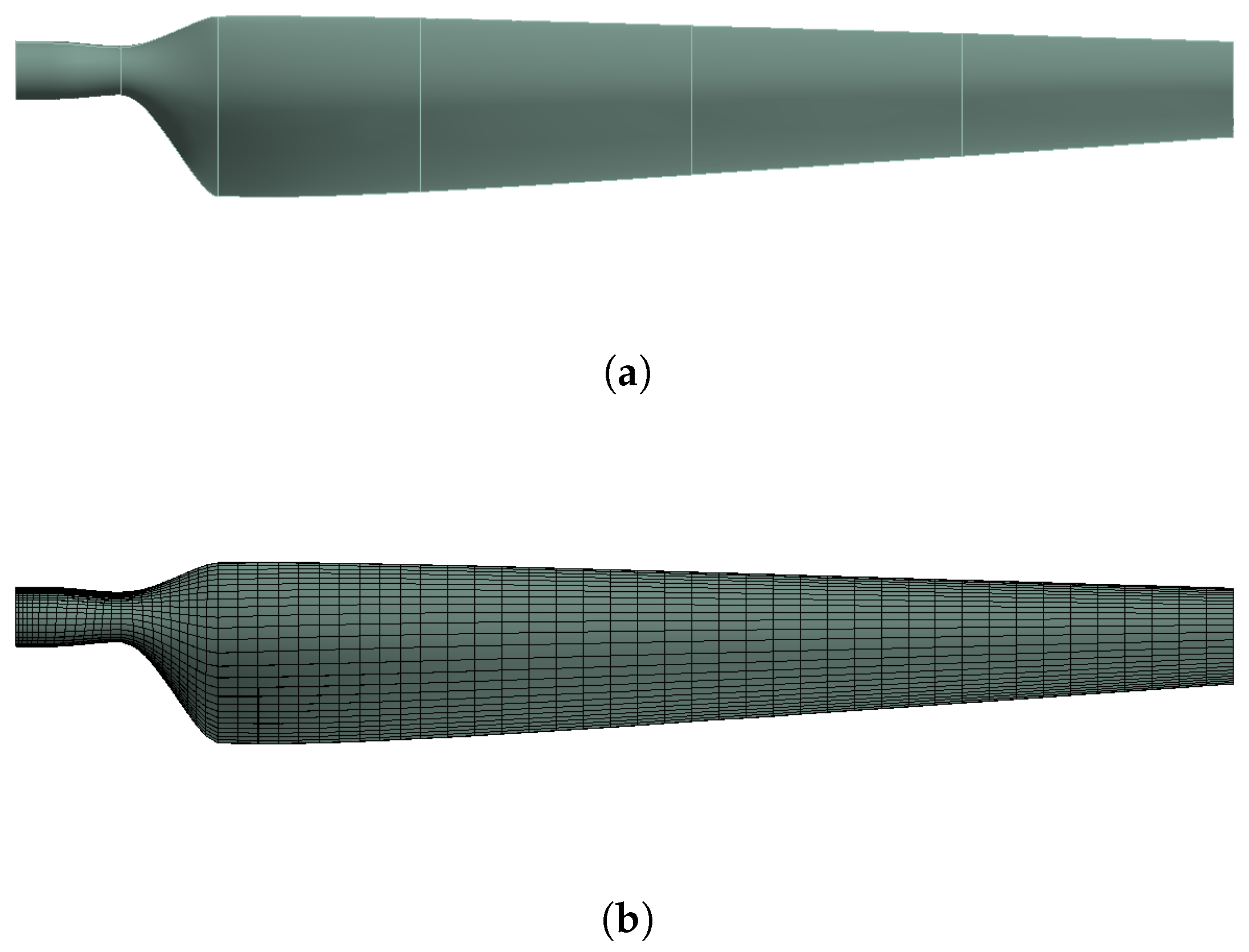
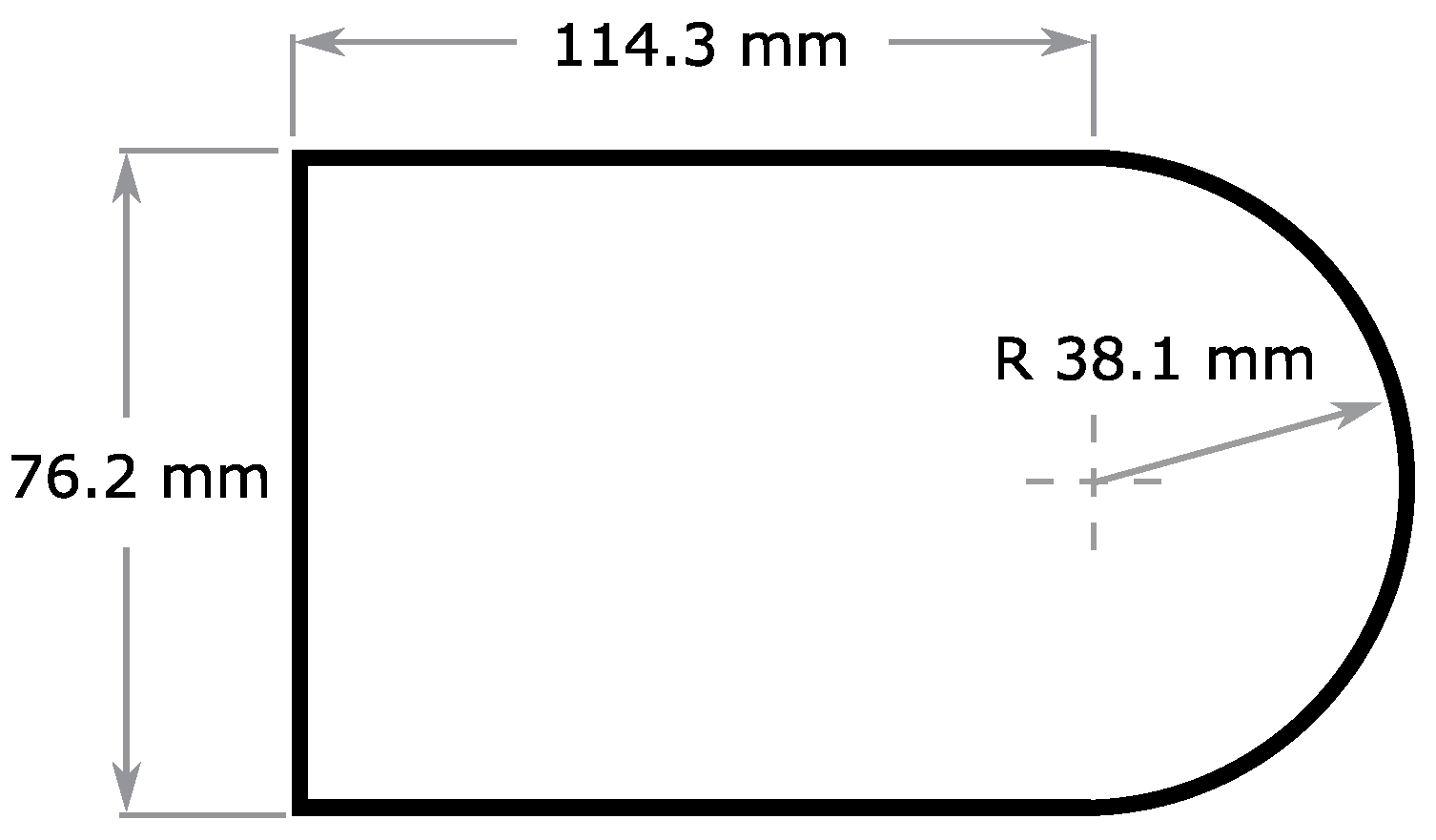
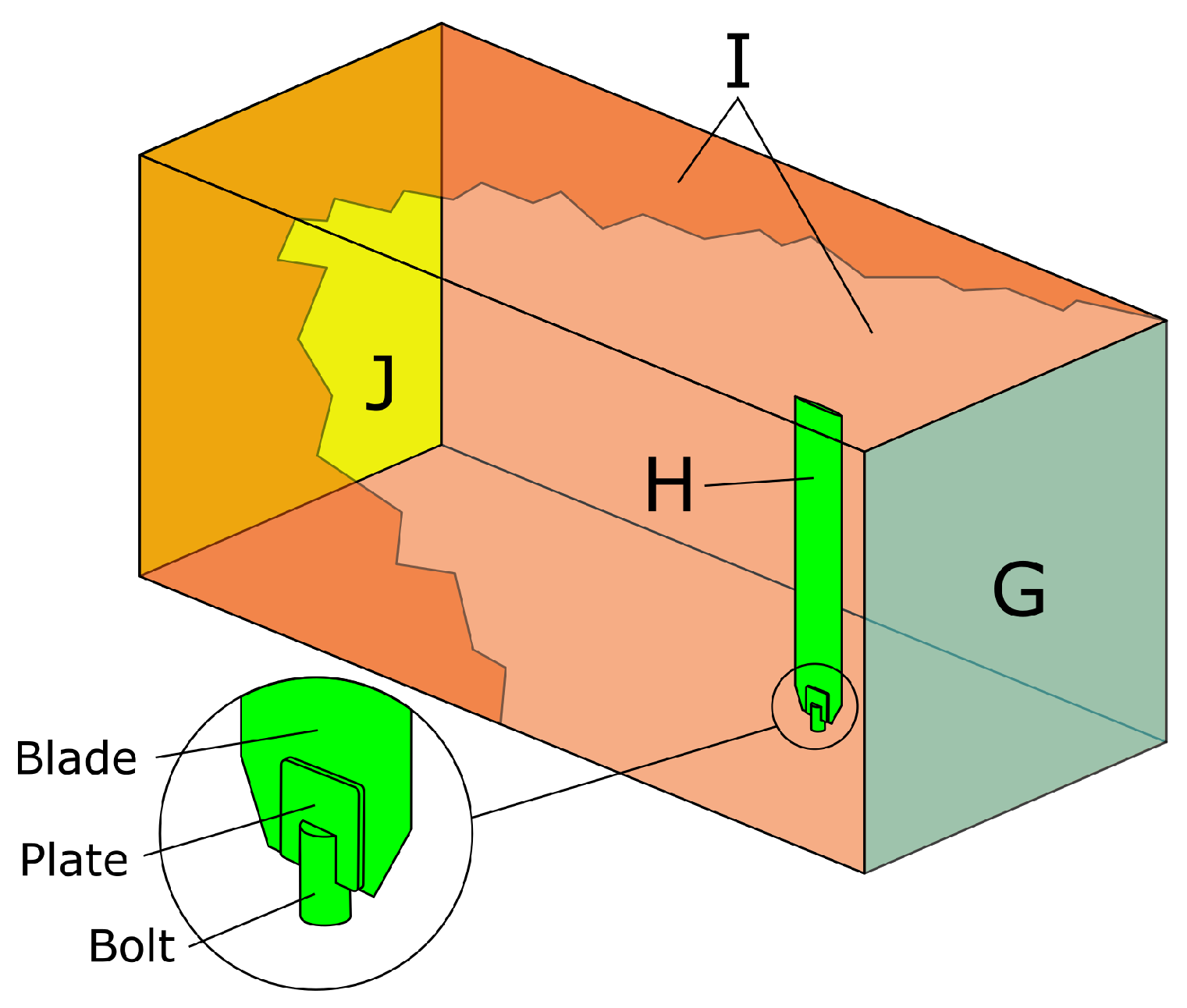
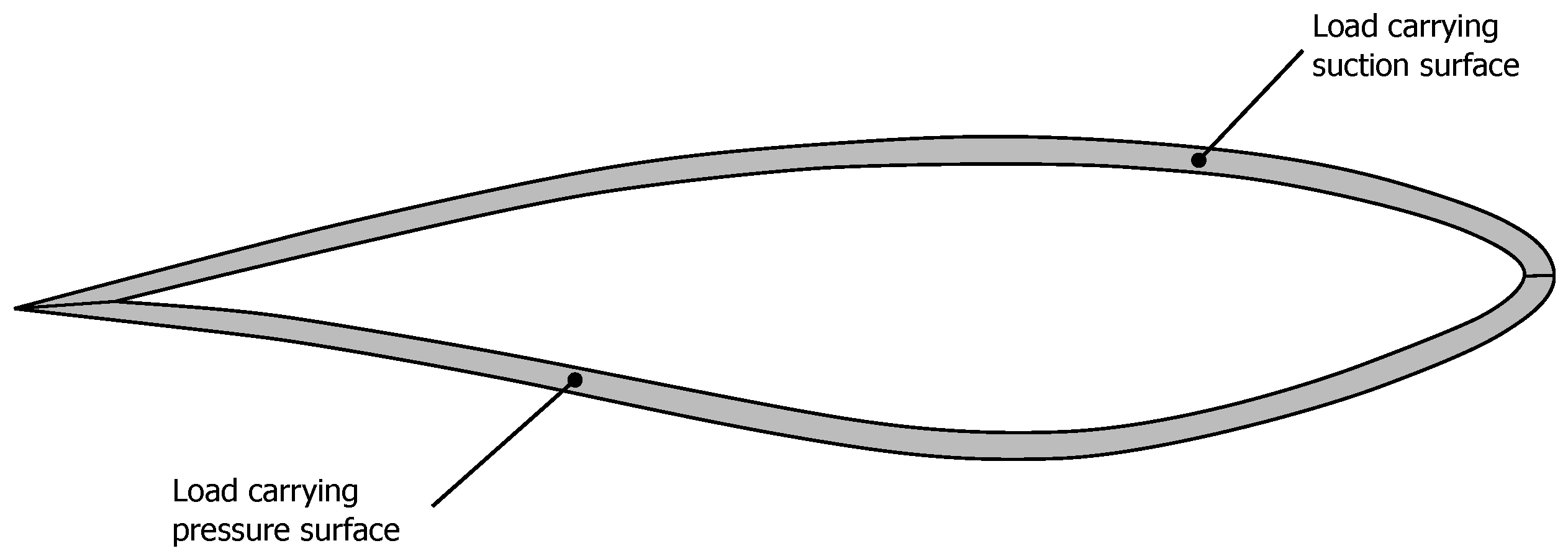
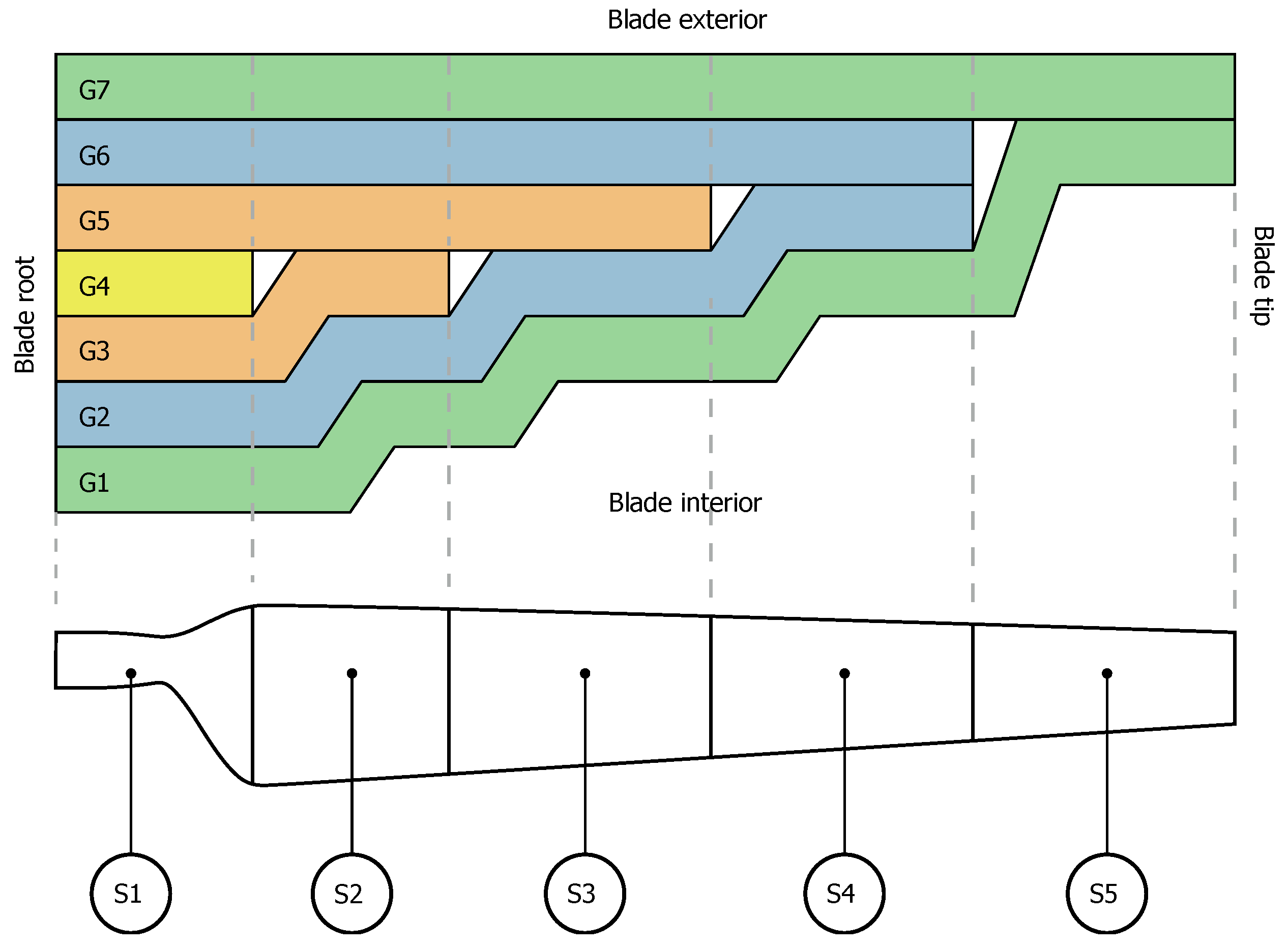

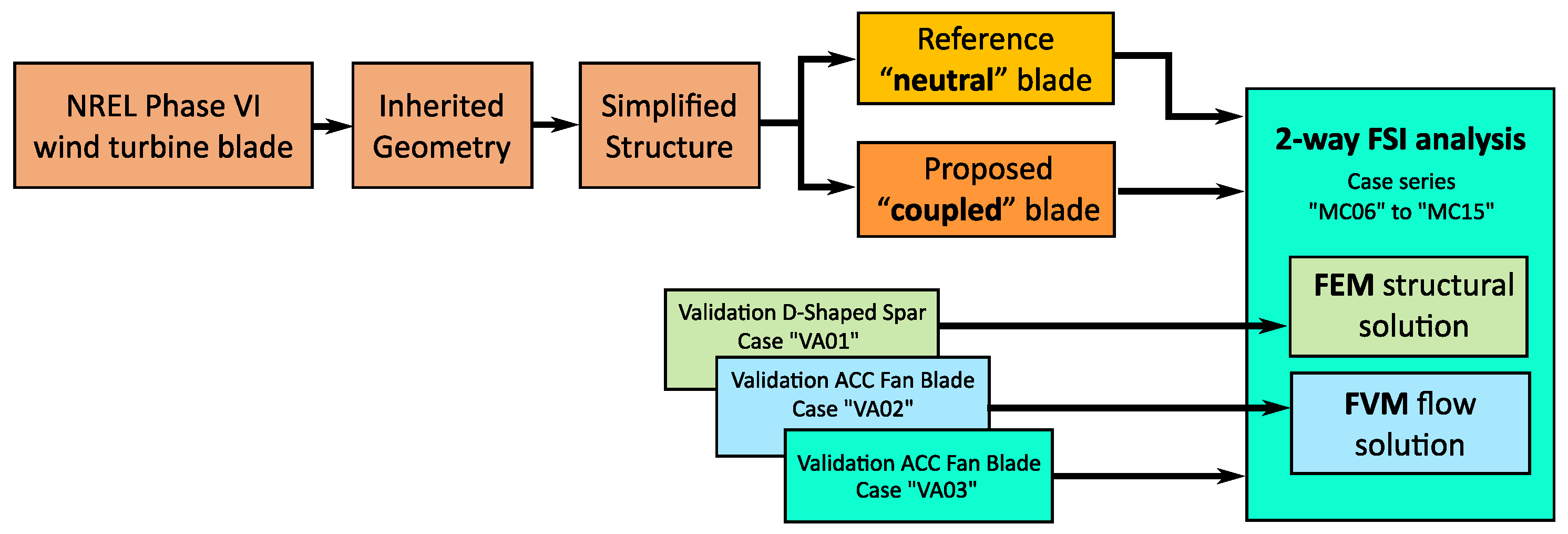
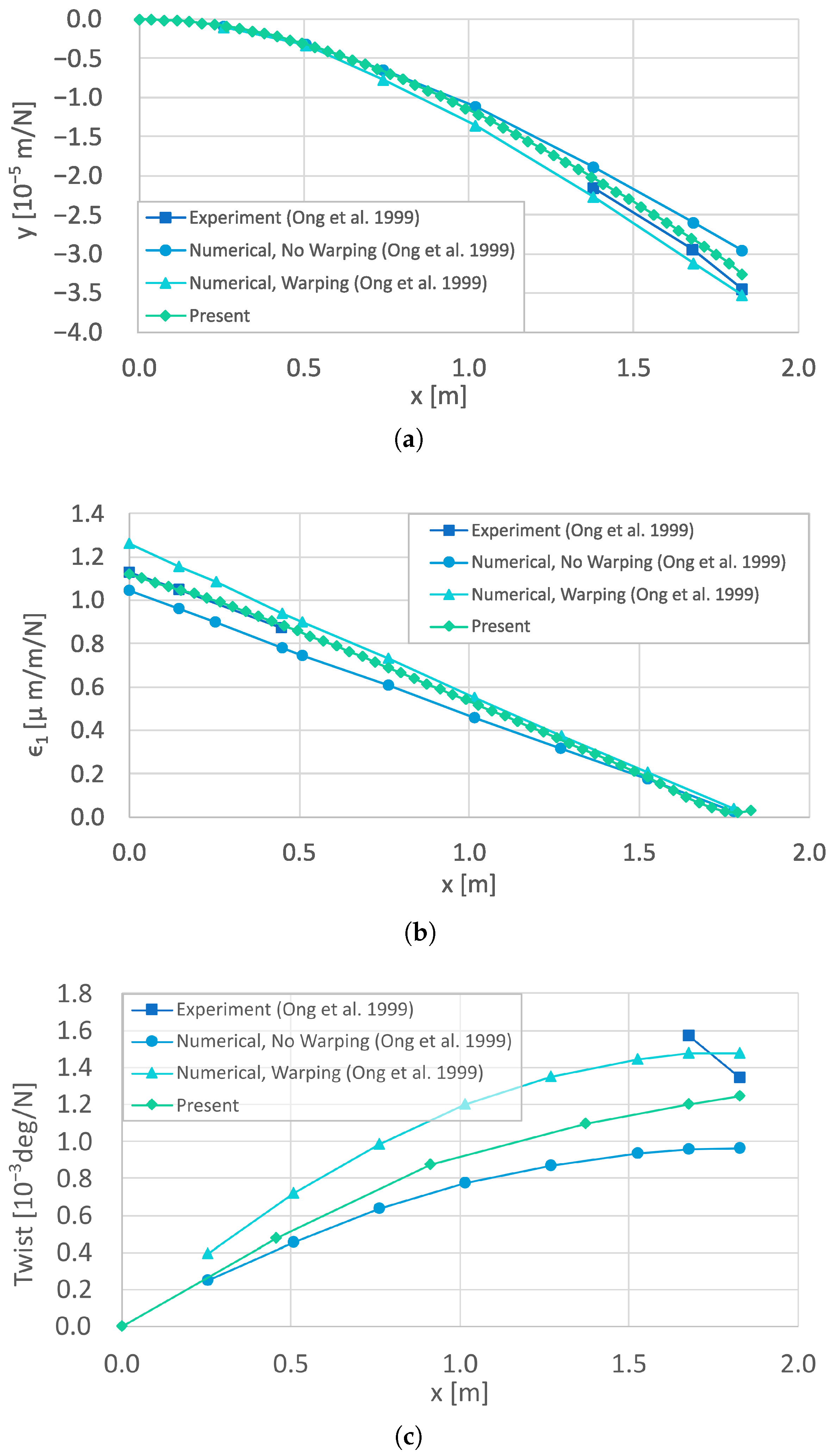
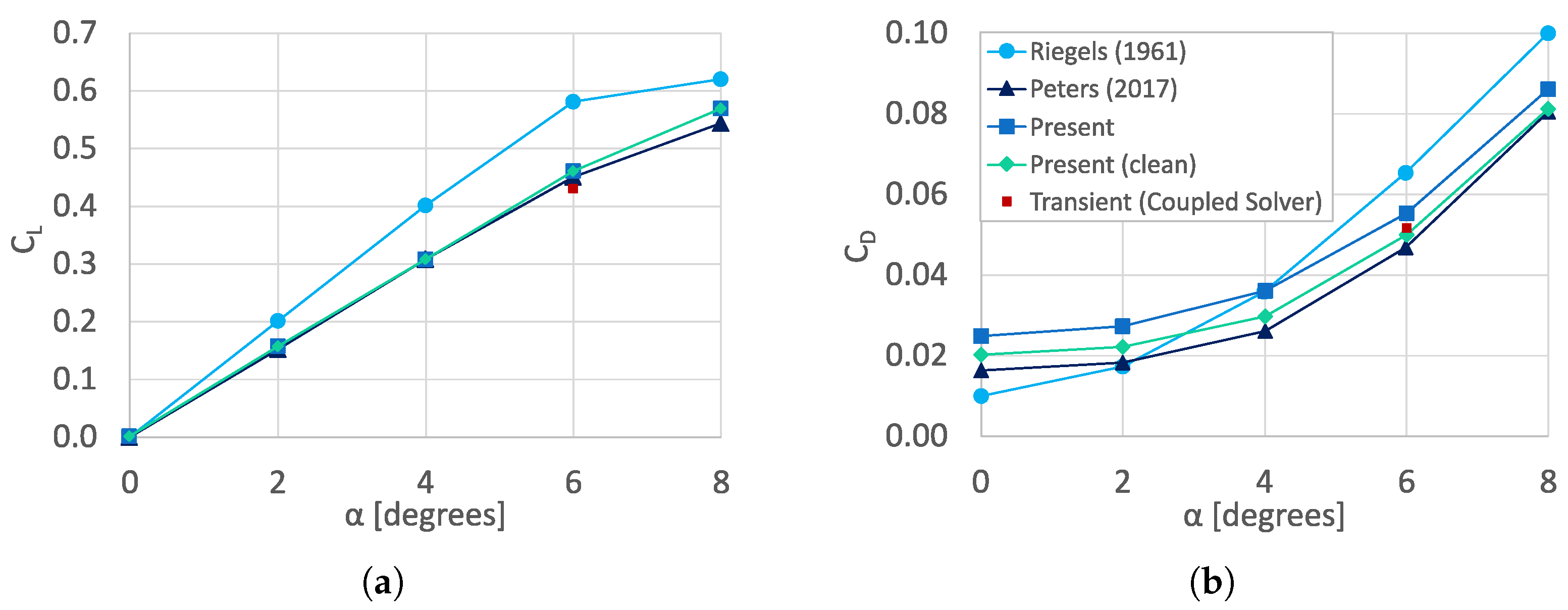

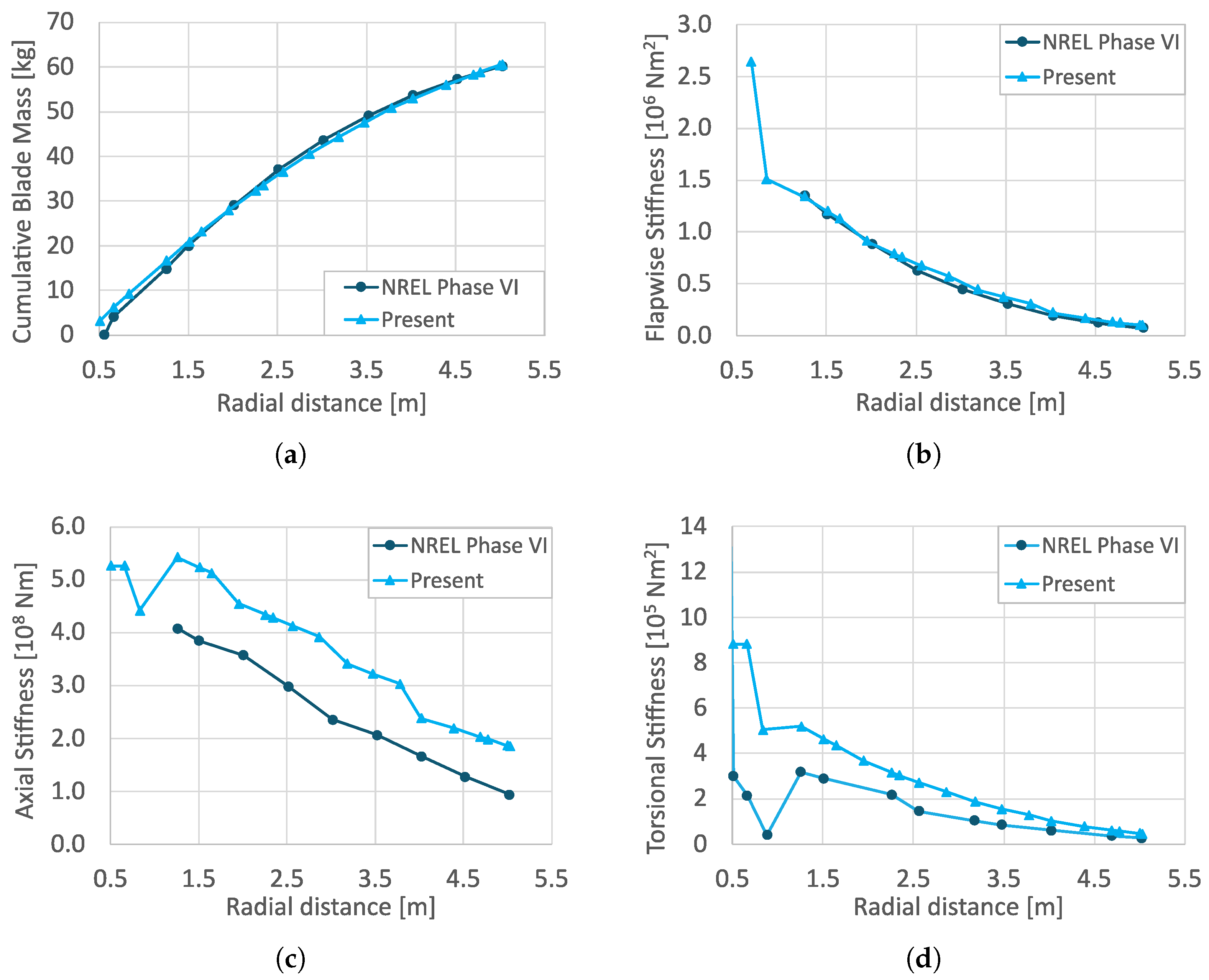
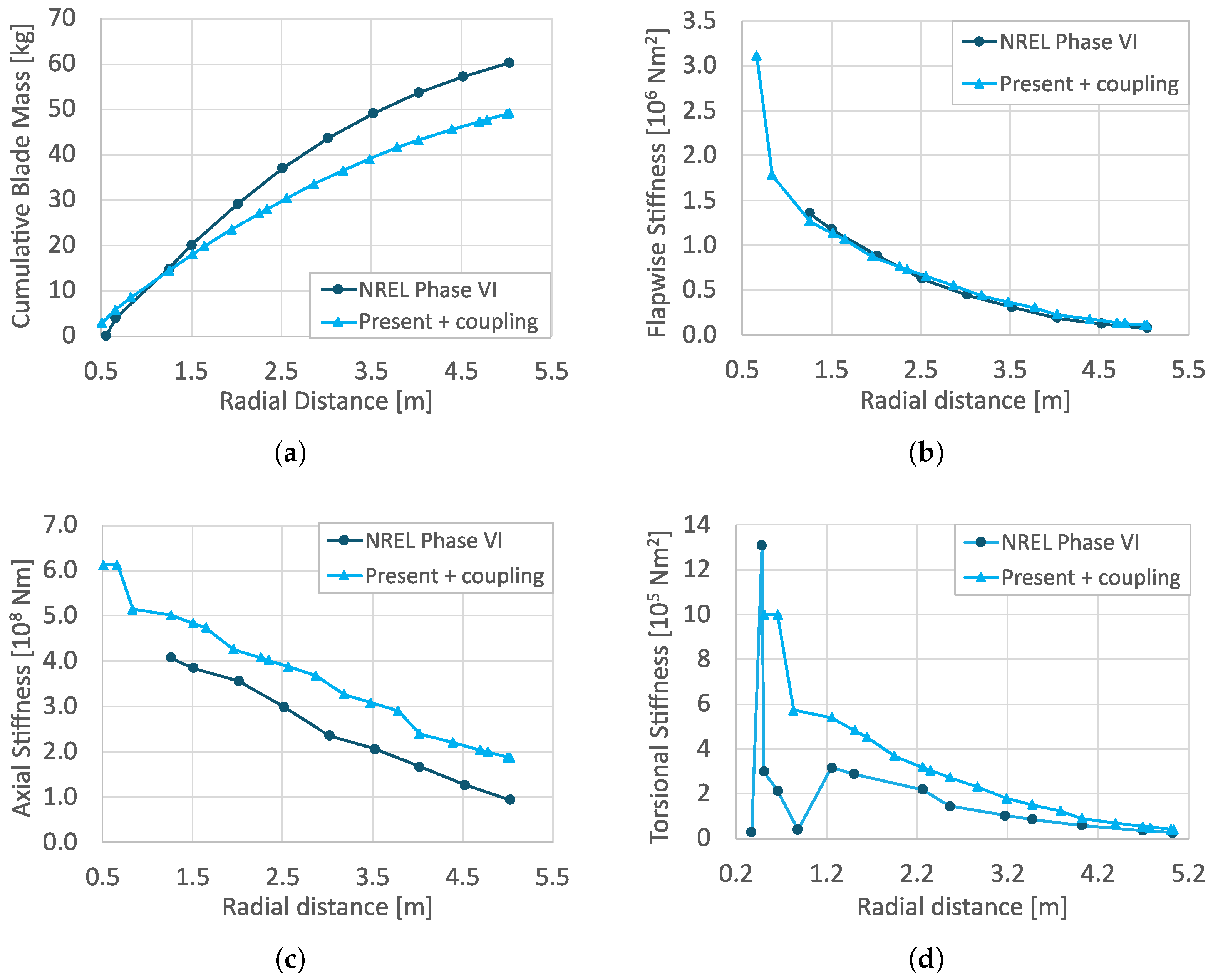
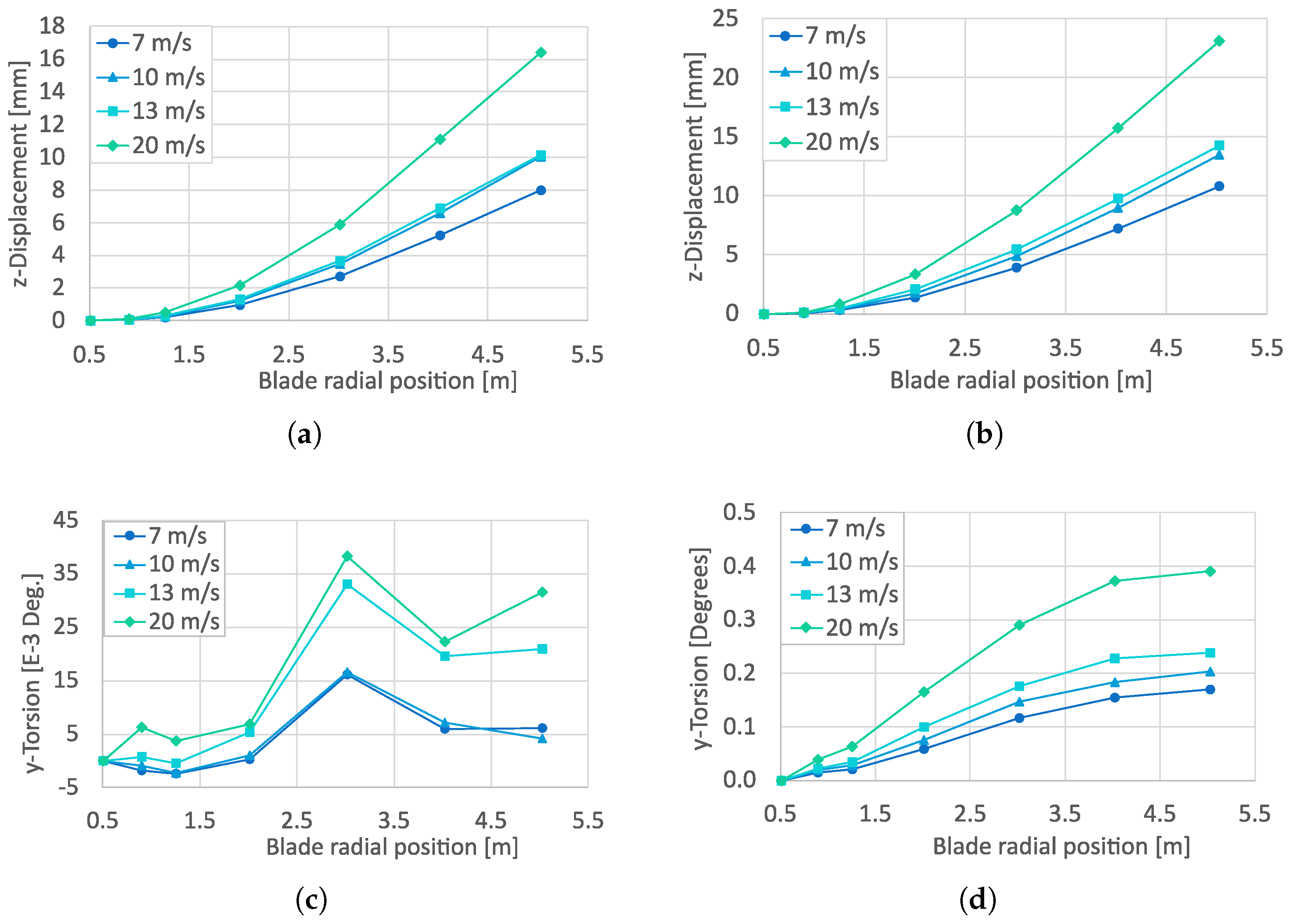

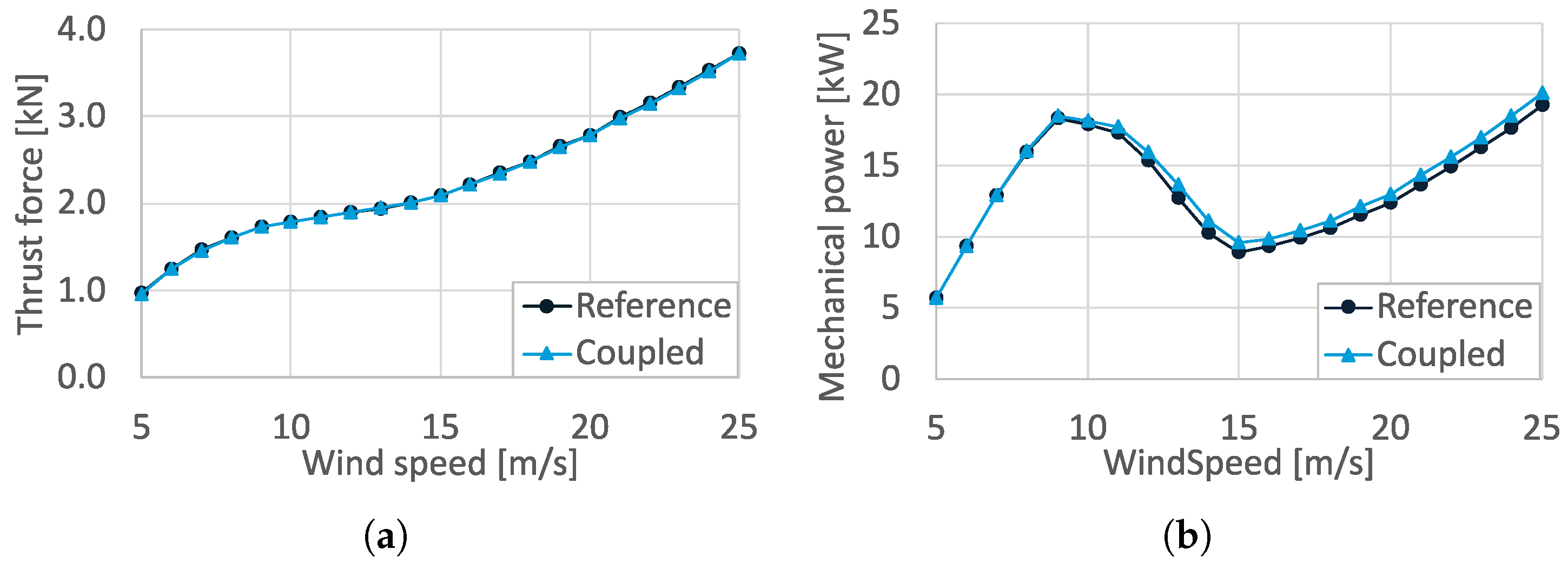

| Coupling Concept | Declared Target | FSI Interface | Structural Modelling | Struc. Modelling Tool | Aerodynamic Modelling | Aero. Modelling Tool | Source |
|---|---|---|---|---|---|---|---|
| I | Increase of AEP, power regulation. | WTAB | FEM | TRIC | BEM | WTAero | [15] |
| Prescribed | Increase in AEP, reduction of loads. | N/A | N/A | N/A | BEM, Surface-Panel | Cwind, Palisupan | [16] |
| I, II | Structural design of blade with aeroelastic tailoring. | N/A | FEM | NASTRAN | BEM | Developed by the authors | [7] |
| I | Reduction of loads. | ADAMS | FEM | HyBlade | BEM, Generalized Dynamic Wake Model | AeroDyn | [17] |
| III | Optimization for max AEP. | HAWCStab2 | FEM | HAWCStab2 | BEM | HAWCStab2 | [18] |
| Prescribed | Reduction of power losses. | HAWCStab2 | FEM | HAWCStab2 | BEM | HAWCSTab2 | [19] |
| I | Numerical modeling with vortex method. | FAST | FEM | BeamDyn | Lifting line free vortex wake | Qblade | [20] |
| I, II | Analysis of power performance, load alleviation, and pitch actuation. | DNV GL Bladed | Multi-body dynamics, modal representation | DNV GL Bladed, PreComp | BEM | DNV GL Bladed | [8] |
| I | Analysis of reduction in damage equivalent loads. | PHATAS | FEM | PHATAS | BEM | PHATAS | [21] |
| I | Optimization of tow orientation for maximized power output. | Partitioned, two-way | FEM | ABAQUS | RANS, k- | CRUNCH CFD | [22] |
| I, II | Load alleviation. | Partitioned, two-way | FEM | ABAQUS | RANS, k- SST | STAR–CCM+ | [9] |
| Field Problem | Solution Method | Boundary Condition at Interface | Boundary Value Source |
|---|---|---|---|
| Fluid Flow Solution | FVM | No-slip and no-through condition for velocity (Dirichlet) | N/A, fixed by definition ( at the blade surface) |
| Structural Solution | FEM | Force per unit area (von Neumann) | Fluid Flow Solution |
| Mesh Deformation | FVM | Mesh velocity at the boundary (Dirichlet) | Structural Solution |
| Case Name | Description | Wind Speed in m/s | Subject | System |
|---|---|---|---|---|
| Validation cases | ||||
| VA01 | D-Spar | - | D-Spar | Composite–Structural |
| VA02 | ACC fan blade CFD | 20.45 | ACC fan blade | Fluid flow |
| VA03 | ACC fan blade FSI | 20.45 | ACC fan blade | FSI |
| VA04 | Equivalent neutral blade | - | Wind turbine blade | Structural |
| VA05 | Equivalent coupled blade | - | Wind turbine blade | Structural |
| VA06 | Tip rotation sensitivity study | - | Wind turbine blade | Structural |
| Main cases | ||||
| MC06 | 2-way FSI 7N | 7 | Neutral blade | System Coupling |
| MC07 | 2-way FSI 10N | 10 | Neutral blade | System Coupling |
| MC08 | 2-way FSI 13N | 13 | Neutral blade | System Coupling |
| MC09 | 2-way FSI 20N | 20 | Neutral blade | System Coupling |
| MC10 | 2-way FSI 39N | 39 | Neutral blade | System Coupling |
| MC11 | 2-way FSI 7C | 7 | Coupled blade | System Coupling |
| MC12 | 2-way FSI 10C | 10 | Coupled blade | System Coupling |
| MC13 | 2-way FSI 13C | 13 | Coupled blade | System Coupling |
| MC14 | 2-way FSI 20C | 20 | Coupled blade | System Coupling |
| MC15 | 2-way FSI 39C | 39 | Coupled blade | System Coupling |
| Auxiliary cases | ||||
| AX16 | BEM | 5 to 25 | Deformed blade | Fluid flow |
| AX17 | 7N CFD | 7 | Rigid blade | Fluid flow |
| AX18 | 10N CFD | 10 | Rigid blade | Fluid flow |
| AX19 | 13N CFD | 13 | Rigid blade | Fluid flow |
| AX20 | 20N CFD | 20 | Rigid Blade | Fluid flow |
| Ply Group | Ply Count | Laminate Sequence |
|---|---|---|
| G1 | 8 | |
| G2 | 1 | |
| G3 | 1 | |
| G4 | 32 | s |
| G5 | 1 | |
| G6 | 1 | |
| G7 | 8 |
| Ply Group | Ply Count | Laminate Sequence |
|---|---|---|
| G1 | 6 | |
| G2 | 1 | |
| G3 | 1 | |
| G4 | 32 | s |
| G5 | 1 | |
| G6 | 1 | |
| G7 | 6 |
| Blade | Flapwise Moment [N m] | Edgewise Moment [N m] | Torsional Moment [N m] | Axial Force [N] | Tangential Force [N] |
|---|---|---|---|---|---|
| Reference | −7214.36 | 1375.69 | 288.44 | −2525.57 | −545.92 |
| Coupled | −7235.30 | 1429.58 | 286.52 | −2530.76 | −562.32 |
Disclaimer/Publisher’s Note: The statements, opinions and data contained in all publications are solely those of the individual author(s) and contributor(s) and not of MDPI and/or the editor(s). MDPI and/or the editor(s) disclaim responsibility for any injury to people or property resulting from any ideas, methods, instructions or products referred to in the content. |
© 2023 by the authors. Licensee MDPI, Basel, Switzerland. This article is an open access article distributed under the terms and conditions of the Creative Commons Attribution (CC BY) license (https://creativecommons.org/licenses/by/4.0/).
Share and Cite
Tamayo-Avendaño, J.M.; Patiño-Arcila, I.D.; Nieto-Londoño, C.; Sierra-Pérez, J. Fluid–Structure Interaction Analysis of a Wind Turbine Blade with Passive Control by Bend–Twist Coupling. Energies 2023, 16, 6619. https://doi.org/10.3390/en16186619
Tamayo-Avendaño JM, Patiño-Arcila ID, Nieto-Londoño C, Sierra-Pérez J. Fluid–Structure Interaction Analysis of a Wind Turbine Blade with Passive Control by Bend–Twist Coupling. Energies. 2023; 16(18):6619. https://doi.org/10.3390/en16186619
Chicago/Turabian StyleTamayo-Avendaño, Jorge Mario, Ivan David Patiño-Arcila, César Nieto-Londoño, and Julián Sierra-Pérez. 2023. "Fluid–Structure Interaction Analysis of a Wind Turbine Blade with Passive Control by Bend–Twist Coupling" Energies 16, no. 18: 6619. https://doi.org/10.3390/en16186619
APA StyleTamayo-Avendaño, J. M., Patiño-Arcila, I. D., Nieto-Londoño, C., & Sierra-Pérez, J. (2023). Fluid–Structure Interaction Analysis of a Wind Turbine Blade with Passive Control by Bend–Twist Coupling. Energies, 16(18), 6619. https://doi.org/10.3390/en16186619








